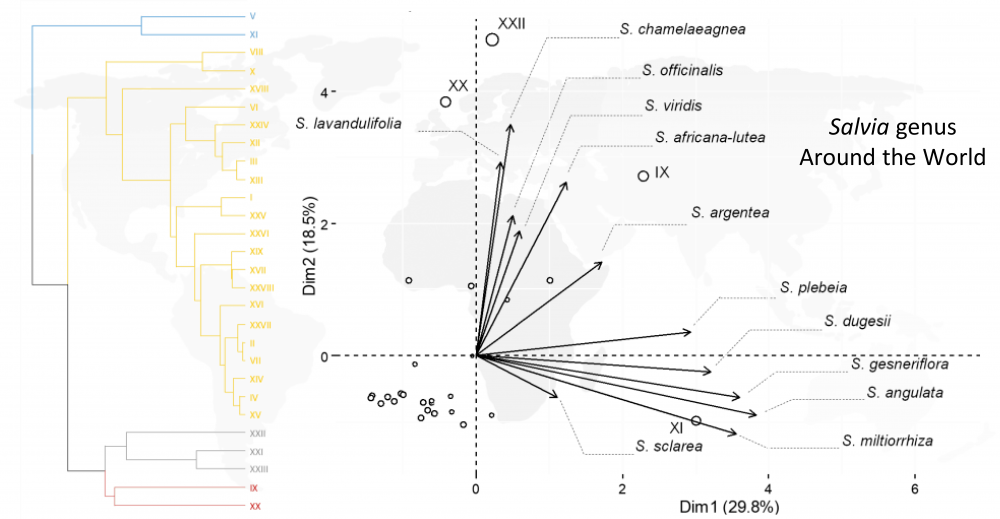JOURNAL 1912
Records of Natural Products
Year: 2021 Issue: 4 July-August
p.312 - 323
Viewed 2616 times.
-
Mónica A. Calderón-Oropeza

-
Ernesto Ramírez-Briones

-
Gabriela Rodríguez-García

-
José L. Salvador-Hernández

-
Brenda Y. Bedolla-García

-
Sergio Zamudio

-
Luis D. Maldonado-Bonilla

-
Rosa E. del Río

-
Mario A. Gómez-Hurtado

GRAPHICAL ABSTRACT

ABSTRACT
Several applications of natural products around the world arise from traditional knowledge or evident organoleptic properties, and essential oils from Salvia species are a current example. The genus is integrated by native and endemic species from Africa, the Americas, Asia, and Europe. In the present work, essential oil compositions of Salvia dugesii and S. gesneriiflora were experimentally determined and statistically correlated with ten described Salvia species from four continents by using multivariate methods complemented with univariate analysis and PCA protocols, to establish metabolic approaches. Essential oils data from S. angulata, S. miltiorrhiza, S. plebeia, S. sclarea, S. argentea, S. viridis, S. lavandulifolia, S. africana-lutea, S. chamelaeagnea, and S. officinalis were included in the study. By the above, 146 essential oil components, classified into 29 structural skeletons, according to its biogenesis, were analyzed. The results provided metabolic similarities between American and Asian Salvia species due to a higher active sesquiterpene metabolism; and African and European species revealed chemical similarities, since monoterpene pathways dominate. Such correlations are in concordance with genetic knowledge about genus, thereby, approaches on metabolism of Salvia can be easily visualized using statistical tools, consequently, practical method to analyze Salvias for scientific proposes.
KEYWORDS- Salvia
- Salvia dugesii
- Salvia gesneriiflora
- Lamiaceae
- essential oil metabolism
- chemometric analysis